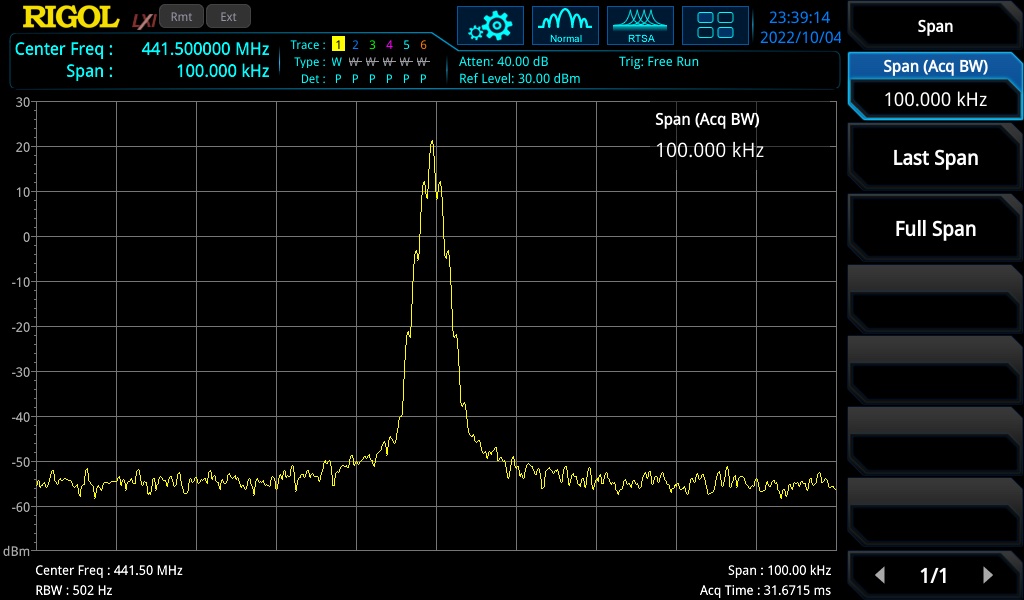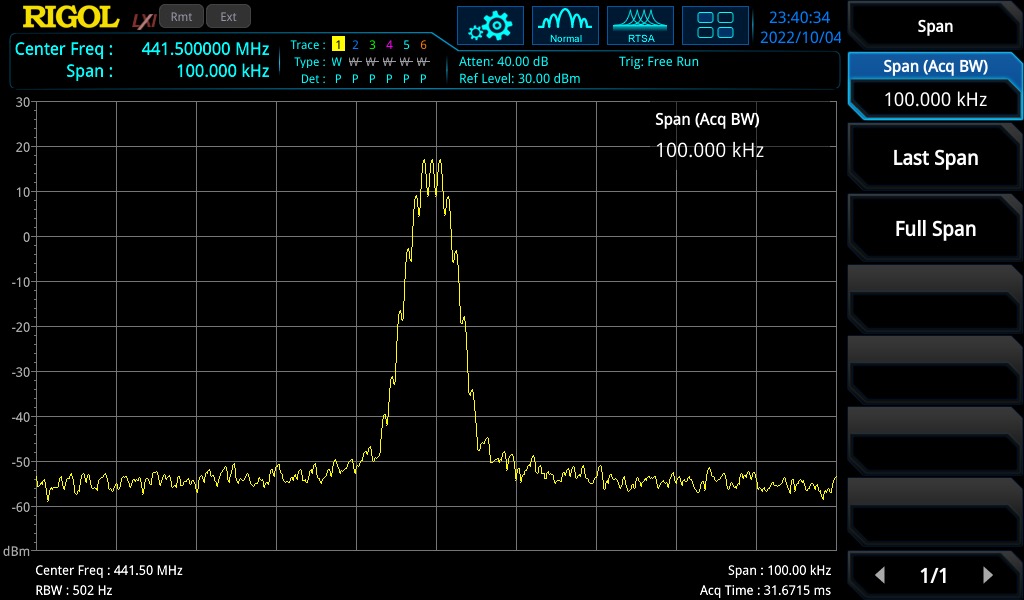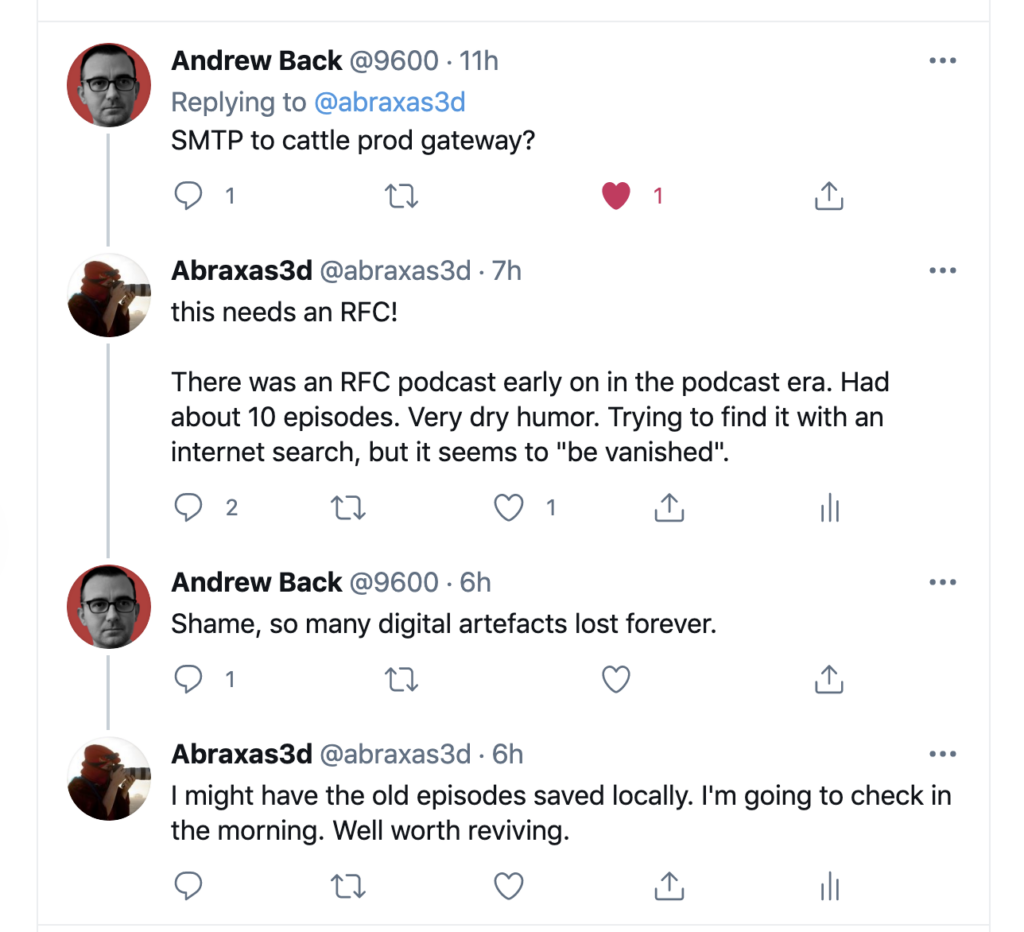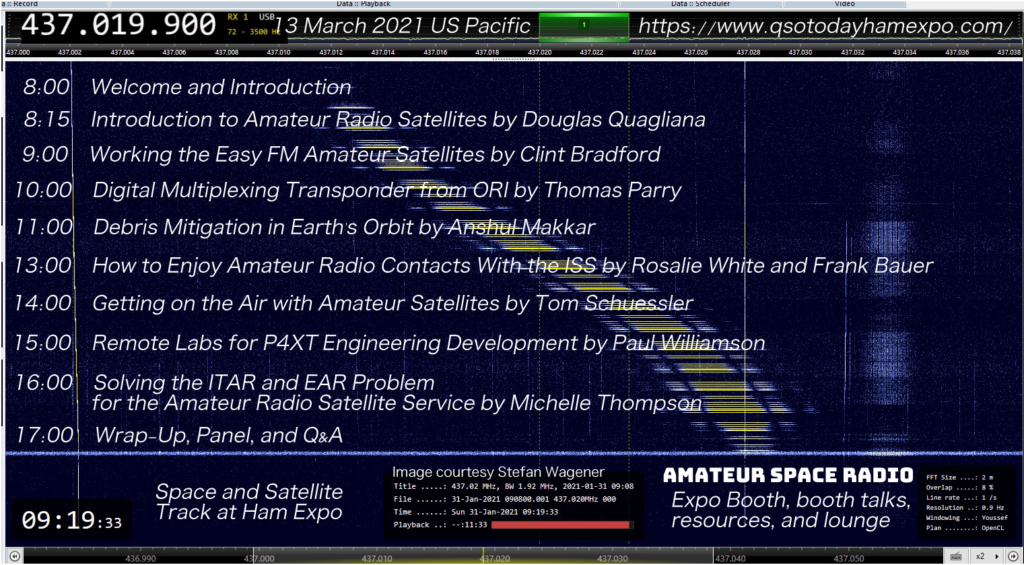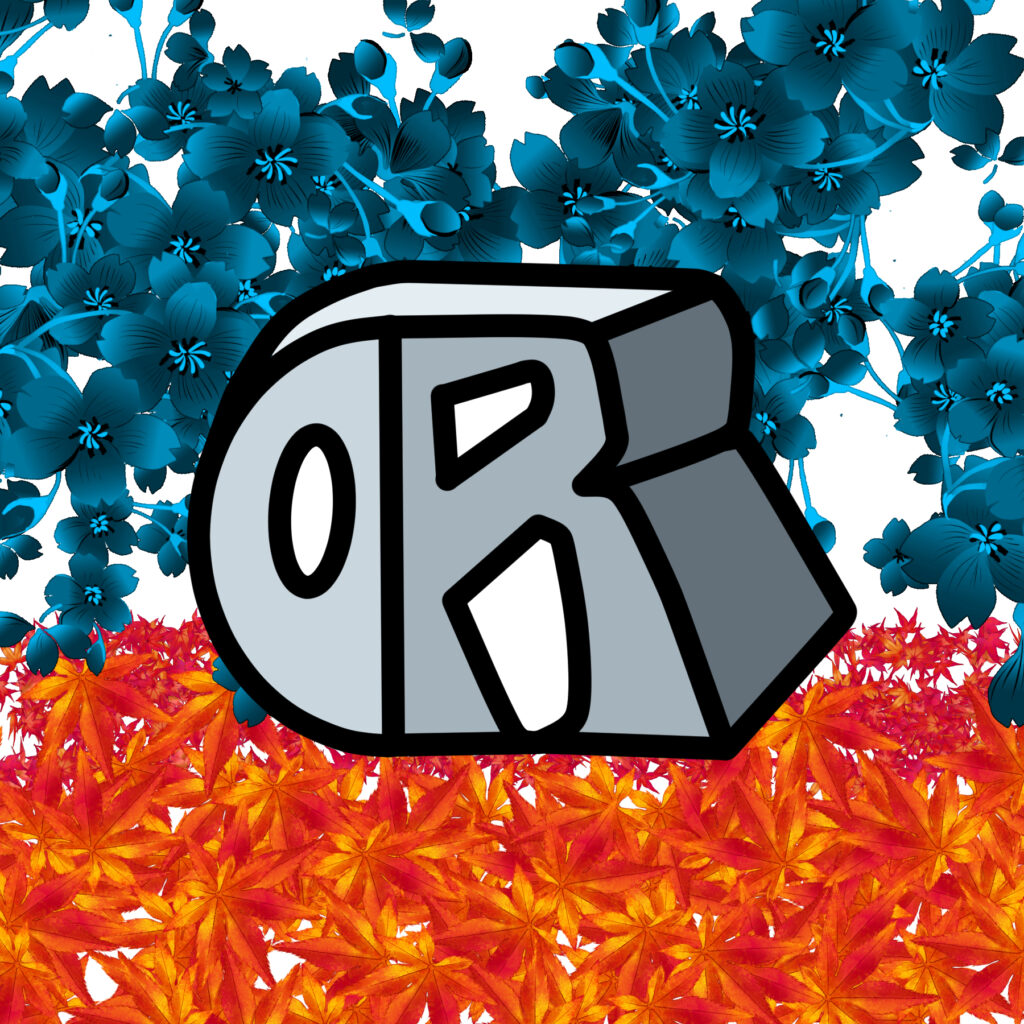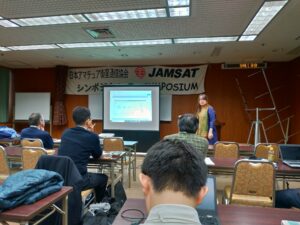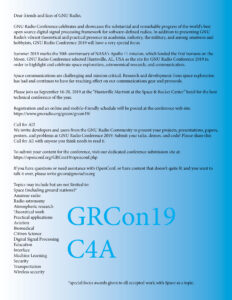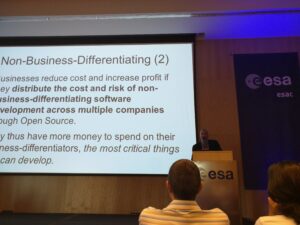Greeting all, and welcome to the close of 2021 at ORI.
For a high-level summary of what Open Research Institute is and what we have been up to, please watch the very short video presented at Open Source Cubesat Workshop 2021. The recording of the talk is here: https://youtu.be/VG9-Mc1Hn4A
If you would like to keep up with what we do, then subscribing to our mailing list and YouTube channel helps in several ways. More people find out about what we do because our work will get recommended more often to new people, and you get notifications of new content when it’s published.
Please visit https://www.youtube.com/c/OpenResearchInstituteInc/featured and subscribe to YouTube.
Please visit https://www.openresearch.institute/getting-started/ for information on joining the mailing list and Slack.
Join Phase 4 Ground Trello board:
https://trello.com/invite/b/REasyYiZ/8de4c059e252c7c435a1dafa25f655a8/phase-4-ground
Join Phase 4 Space Trello board:
https://trello.com/invite/b/GRBWasqW/1336a1fa5b88b380c27ccf95d21fec79/phase-4-space
We have other social media accounts as well (Twitter, Instagram, FaceBook) and we gratefully accept help and support there too. Want to be part of the social media team? Write ori at openresearch dot institute to apply.
https://twitter.com/OpenResearchIns
https://www.facebook.com/openresearchinstitute
https://www.instagram.com/open_research_institute/
Here are our challenges and successes from the past year and what we’re looking forward to in 2022. There’s a lot going on here and some of the things we are facing are not fun. Some of the discussion is political and tedious. We have some decisions that have been made and some big ones to make for 2022 and beyond. Your opinions matter. Comment and critique welcome and encouraged.
First and foremost, we thank the individuals and organizations that have made our work possible. Funding comes from YASME Foundation, ARRL Foundation, ARDC Foundation, Free Software Foundation, our Trans-Ionospheric and JoCo Badge projects, proceeds from the Gold Medal Ideas ORI store, and people like you.
2021 Retrospective
We are a research institution. We are not a ham radio club. Our primary focus is to carry out open source work for the amateur radio space and terrestrial bands. We expect this work to be used by amateur radio groups that execute and operate designs in space and on earth. This expectation has not been met in some of the ways we anticipated, but we have a broad path forward, a lot of things going very well, and we are going to take full advantage of all the positive developments over the past year in every way we can.
This next part is not the most fun story to write or read, but there’s a lot of very good lessons learned here, and it needs to be put in one place so that our amateur satellite volunteers know about it and can find it.
One can skip ahead (by clicking here) to “Successes in 2021” further down the page to get straight to technical progress.
When we say we expected our work to be used by amateur satellite groups, we assumed this meant AMSAT. Primarily AMSAT-NA, but we are also here to serve AMSAT-DL, AMSAT-UK, and so on. ORI is an AMSAT Member Society, and has showed preparation, enthusiasm, and experience through continued contributions to the amateur satellite community. ORI volunteers have professional, academic, and amateur experience with collectively at least a couple dozen payloads in orbit, ranging from GEO commercial to LEO amateur. A very large fraction of our volunteers are new to amateur radio. They have never volunteered for AMSAT or any other legacy satellite group before. Other volunteers have experience with AMSAT but no current role because of the politics of AMSAT-NA GOLF. I can say without any reservation that there is no loss of capability to any AMSAT organization from ORI activity. We have always encouraged volunteering for and membership within whatever AMSAT organization is nearest to you. It’s not just supportive words, but actions as well. We have sold AMSAT-NA memberships at numerous events over the years. We have actively promoted TAPR, AMSAT, ARRL, and other amateur groups at every opportunity. We’ve happily worked with TAPR and ARRL to great positive effect.
We have achieved some truly significant wins in the regulatory sphere with ITAR/EAR and Debris Mitigation, have groundbreaking success in P4DX comms development, and have one of the very few functional advanced communications research remote access lab benches in existence. We have expanded the AmbaSat Inspired Sensors project to move the AmbaSat to 70cm in anticipation of sounding rocket and space tests, have fully supported M17 Development and Deployment, and have proposed an employment program to ARDC to directly confront the problem with open source burnout in DSP/FPGA open source amateur designs.
We really do not suck.
However, despite all this good work, AMSAT-NA leadership, including senior officers, have consistently and publicly described ORI as “grifters” and “thieves” and “frauds”. Officers of AMSAT-NA have said we are “undeserving of any community support” and have taken actions to try and make this opinion a reality. It hasn’t worked, but these aggressively provocative and negative public posts from AMSAT-NA officers and members about ORI are clearly intended to harm. The attacks date back to 2018. ORI has not responded to any of this. However, ignoring it doesn’t make it go away, and participants in ORI need to know what’s being said and done.
ORI has had work censored from AMSAT publications and events. An ITAR/EAR update article submitted in October 2021 was removed before publication. According to the editor, this was the first time ever an article had been censored in the AMSAT Journal. The article had been requested by the editor and is in the draft of that issue of the Journal. It was personally squashed by the AMSAT President after the draft Journal was sent out. Several presentations and some papers were ordered to be eliminated at the last minute from 2020 AMSAT Symposium. The work had been welcomed by the submissions chair. This exclusion was unprecedented as well.
This sort of bizarre censorship has no place in amateur radio. Our disappointment with these decisions has been communicated to the editor of AMSAT Journal and the submissions chair for AMSAT Symposium.
For 2021, ORI co-hosted a half-day conference in collaboration with IEEE. This Information Theory Space and Satellite Symposium was successful, got great reviews, and IEEE has asked several times if ORI would be willing to organize something like this again. This gave us a chance to present some of the sort of work that we think should be part of AMSAT Symposium.
You can find the event recordings here: https://www.youtube.com/playlist?list=PLSfJ4B57S8DnhlrRya50IxGP90_uGpiho
Why do we care about any of this grumpy opposition? Why be concerned about censorship from a relatively small event or newsletter?
Because AMSAT-NA is presumed to be the primary advocacy group for amateur satellite activity in the United States. Because we want all AMSAT organizations to be successful. Because AMSAT and ARISS-USA have claimed that they are gatekeepers for amateur radio access to NASA. Because AMSAT-NA currently controls access to things like IARU committees for Region 2. Because AMSAT-NA gets irate when anyone else meets with the FCC on behalf of the amateur satellite service, but will not present anything outside of internal AMSAT-NA interests.
We care about this because ORI showed up and contributed within the AMSAT framework in good faith.
AMSAT-NA is, to be blunt, supposed to help us do exactly what we are doing. We are not a “threat”. We are not “thieves”. We are not “grifters”. We are not “frauds”. We don’t “siphon technical members away”. We are not “an embarrassment”. We deserve absolutely none of this sort of thing. We have invited AMSAT-NA to participate in every single major endeavor that we have carried out and accomplished. This inclusive and cooperative spirit has not been reciprocated.
Tacit acceptance of this sort of behavior is the real embarrassment.
For 2022, we will (of course) continue to utilize the amateur radio bands. All radio work will directly benefit amateur radio terrestrial and space. There will be no loss of opportunities or restrictions of goals for technical work. However, our associations and attention moving forward will focus on communities and organizations that share basic values with ORI. There will be some changes as we adapt, evolve, and grow. We can’t afford to spend time trying to work with organizations completely out of step with open source amateur satellite work, no matter how famous, wealthy, or historical they happen to be.
Successes in 2021
There is a lot of good news here.
Both the San Diego Microwave Group and the San Bernardino Microwave Society have been actively supportive and provided material assistance, volunteer time, and expert advice that we simply would not have received anywhere else. We would not have had a successful meeting with the FCC about Debris Mitigation without the support from members of these two radio clubs. Members generously offered their time, input, and guidance. All the regulatory work can be found here: https://github.com/phase4ground/documents/tree/master/Regulatory
Based on this meeting, we had a series of Orbit Workshops in November 2021. Recordings posted to the debris mitigation channel on our Slack.
The ITAR CJ Request work was funded through a grant from ARDC. The EAR Classification, successful Advisory Opinion Letter from Commerce, FAQ, and “How to use this work” flow graph were paid for with a loan to ORI. The process to fundraise to pay back this loan is underway. The final amount for EAR/Advisory Opinion/FAQ/Flowgraph is $14,425.00 Similar to the ITAR CJ Request work, this amount is substantially less than initial estimates. Credit goes to excellent counsel at Thomsen and Burke LLP and a motivated volunteer team at ORI that handled as many of the preparations as possible. Active sustained involvement reduced costs and increased competence and awareness of the many legal issues we were dealing with.
For 2022, we have two legal efforts that we are considering becoming involved with. Fundraising for those efforts will happen in advance of the work. This is a change from how we did the ITAR/EAR legal work, where fundraising was done after the legal work was completed.
We would not have had a successful multi-media beacon demonstration without support and advice from Kerry Banke and Ron Economos. A video presentation of this work can be found at https://youtu.be/vjfRI1w_dSs?t=609 and documentation can be found here: https://github.com/phase4ground/documents/tree/master/Engineering/Transmitters/DVB-S2-Multimedia-Beacon
This work is presented as a terrestrial beacon, but is also the default digital download for the P4DX transponder payload.
The payload work is currently focused on producing an FGPA-based end-to-end over-the-air demonstration. There are multiple repositories. The best way to get an overview of this work is either through the README.md files in the repos at https://github.com/phase4ground and https://github.com/phase4space.
If reviewing source code and block diagrams is not your thing, then watch the introduction of this video: https://youtu.be/fCmzS6jBhHg followed by the most recent Technical Advisory Committee meeting here: https://youtu.be/V2BlIp7XYMM
Thomas Parry is the Primary Investigator and lead the TAC meeting. Wally Ritchie (SK) was the previous and founding Primary Investigator, and he presented the overview in the design review linked above.
P4DX is our digital multiplexing microwave amateur band transverter. The native digital uplink is M17 FDMA and the downlink is TDM DVB-S2/X. A high-level architectural paper can be found here: https://github.com/phase4ground/documents/tree/master/Engineering/Requirements/Architecture
One of the current roadblocks with the end-to-end demo is a necessary expansion of capability in Remote Labs West. In order to use the Analog Devices ADRV9371 RFIC development board, we can get by with using an SD card image in the FPGA development station. However, this requires a lot of manual intervention, so booting the filesystem over NFS is an obvious improvement. This turned out to be impossible because the kernel from Analog Devices does not appear to support NFS. So, we’re fixing it and will (assuming success) submit whatever capabilities we add to the kernel back to Analog Devices. In the meantime, integration of the various bodies of FGPA code continues. Immediately following the NFS boot addition is DVB-S2/X verification station bring-up, in anticipation of being able to test what comes out of the ADRV9371. That’s just one example of the type of work that has had to happen all year in order to get things done.
Remote Labs have become much more than a “wear item” along the way. Once it became clear that the internet-accessible lab benches had potential to support a much wider variety of projects than just P4DX, volunteers started putting time into making sure they were as easy to use as possible. You can find out more about what Remote Labs are and how they work by going here: https://github.com/phase4ground/documents/tree/master/Remote_Labs
Remote Labs East (Florida) equipment has been moved to Remote Labs South (Arkansas). The move was necessary due to the untimely death of Wally Ritchie in July 2021. The new site will need additional funding to complete that Florida did not require. A grant application was made to ARDC in late August 2021 for this work. Remote Labs South will also have additional capabilities for bacteriophage and interferometry work. Both are open source efforts.
There is a backup bridge funding plan to get the lab bench at Remote Lab South operational. We can temporarily divert funds allocated to P4DX for FPGA software licenses, as the floating license approach has worked out well for us. The original budget planned for 10 node-locked licenses as those were the type of licenses we have received as an organization in the past. With only 1 floating license required for work so far, this leaves some margin in the budget. This is enough margin to develop Remote Labs South infrastructure while waiting for a response about funding from ARDC, without further delaying deployment of this lab.
Remote Labs are a good example of the frugality, public science orientation, and opportunistic spirit of ORI volunteers. We look forward to many years of making the equipment available to the open source community. We could use your help in spreading the word about this asset.
HamCation and Ham Expo have been invaluable. The staff and volunteers have been friendly, supportive, and creative. We are looking forward to HamCation 2022. If all goes well this will be our first in-person event most of us have been able to attend in quite a while. We have a booth in our usual spot. M17 Project and TAPR are on either side, and the large Society for Amateur Radio Astronomy booth is on the other side of TAPR. DATV is in the same row. ARRL will have a large presence. We have a lot of forum time and plenty to talk about. Returning to in-person events is a big step and there is extra stress, risk, and planning involved. If you are willing to be part of HamCation, please get in touch and we will add you to the planning spreadsheet and discussions.
IEEE Computer Society, Information Theory Society, and Signals and Systems have been incredibly supportive. As mentioned above, in 2021, ORI co-hosted a half-day conference in collaboration with IEEE. This Information Theory Space and Satellite Symposium was successful, got great reviews, and IEEE has asked several times if ORI would be willing to organize something like this again.
You can find the event recordings here: https://www.youtube.com/playlist?list=PLSfJ4B57S8DnhlrRya50IxGP90_uGpiho
We have received a lot of positive feedback from IEEE section, region, and national executive teams. The biggest challenge with IEEE is that they are not the best or easiest way to publish open source or open access work. They are honestly not set up for public access papers. IEEE is split between academia and industry members, and that’s the constituencies more or less served. Despite the big differences between a tiny open source non-profit and a gigantic professional development organization, there is a substantial amount of interaction and genuine mutual support. IEEE does not exist without volunteers. Therefore, what we are doing is recognizable as a thing of value by everyone in any role any of us comes into contact with. We also benefited from having access to the salary survey results, anonymized membership statistics, and a targeted member survey in order to help construct the Engineers General grant proposals to ARDC. Is there a possibility of funding through IEEE? Yes, although there are a lot of limitations.
We have solid relationships with a number of Universities. Working with academic institutions is not simple as a non-profit, but we have transcended these difficulties several times and are part of the process of getting space “done better” for students wherever we can. Our most recent involvement is getting AmbaSat at 70cm, the DVB-S2/X microwave band work, and M17 equipment on board sounding rockets and in the running on several LEO platforms. Is there a possibility of funding through Universities? Honestly, no. They expect funding from us, in order to do anything with us. That is just the way the current engineering academy operates. Students are not “free labor” now and never really have been in the past.
We have brought a small grant to a University, with the professor as the Primary Investigator (AmbaSat Inspired Sensors). We would be willing to do that again, if we were fortunate enough to get a professor of the same motivation, experience, and availability, and fortunate enough to get enough grant money to ensure student time. In general, the overhead customarily demanded at a University, and the costs of getting significant seat time from enough students, require much larger grants than we have pursued to date. If you know of an opportunity or have an idea, get in touch with ORI board and let’s see what we can achieve.
AmbaSat Inspired Sensors has redesigned the AmbaSat board to move from 915 MHz ISM LoRaWan to 70cm amateur radio satellite band. Thank you to Vidya Gopalakrishna and Jay Francis for making this happen. LoRa with integration to both SatNOGS and The Things Network through bridging is prototyping now. The first hardware with the 70cm part has been received and works. There were other changes to improve power and ground and routing. All of the details can be found in the kicad-conversion branch at https://github.com/phase4space/AmbaSat-1/tree/kicad_conversion/Release
This past year has been a significant step forward for the M17 Project. The protocol has been strengthened, the number of development boards in the community has increased, the amount of hardware that M17 can work on has increased, and the lab on the East Coast of the US is moving forward. There have been numerous successful public outreach efforts resulting in a steady increase in name recognition, awareness of the communications mode, and participation on the M17 Discord. A large amount of lab equipment has been earmarked by ORI for M17. This purchase opportunity came from Open Lunar Foundation and will put M17 lab into a highly capable category from the start. All of us associated with M17 would like to recognize the OpenRTX project. This team is a vital part of the M17 ecosystem and has done a significant amount of highly technical work to enable M17 on the MD-380 HT. OpenRTX has contributed a lot of engineering work, verification, validation, and lab tests for M17.
https://m17project.org/
https://openrtx.org/#/
Open Lunar Foundation and ORI collaborated on an SBIR grant application for funding targeting LunaNet in January 2021. While our application for funding was not successful, the feedback from the reviewers was positive and very constructive. The process for applying was clear, the technical work in preparing the application lined up with all of ORI’s goals for P4DX, and the teamwork with OLF was excellent.
https://www.openlunar.org/
We attempted to apply for a STTR with Tek Terrain LLC for opportunistic positioning and ranging using LEO signals in mid-October 2021, but we were not able to complete the application in time. We look forward to the next opportunity to work with a for-profit on something like this, as there are dozens of opportunities through a variety of government agencies for research and development. This particular project would have put some significant work into the public domain during Phase 1 of the grant.
We have an opening on our board of directors. Our co-founder Ben Hilburn has stepped down from the board. Thank you very much to Ben for helping found and build ORI. We welcome you to a (much less demanding) senior advisor role.
If you have a recommendation for someone to invite, or you would like to volunteer for this role, then get in touch to start the process. There are a few IRS limitations on who can be on the board to prevent conflicts of interest. No relatives of current board members, for example.
Current board is listed at: https://www.openresearch.institute/board-of-directors/
Our open source workers/employment initiative is called Engineers General. Two grant proposals were made to ARDC after a series of productive meetings with their staff. The initiative got a lot of positive feedback. All of ARDC’s feedback was incorporated into a set of revised grant requests that were re-submitted in October 2021.
We have 6 additional resumes that have been submitted to us. We have received a very large amount of interest in this initiative. Information from IEEE salary surveys, informational interviews with open source workers, and combing through peer reviewed papers resulted in the hypothesis of Engineers General, and all of this information was communicated to ARDC in support of the grant requests.
ORI board has the capacity, capability, and experience to manage contracted workers, and there is a population of highly qualified people that want to work in open source.
We do not have a timeline on when we will hear back from ARDC. P4DX took 11 months to approve. The ITAR legal work funding wasn’t pressing since the funding application followed completion of the work. The AmbaSat Inspired Sensors grant application was folded into P4DX at some point during its review process.
Rent-a-GEO was submitted in October 2019, and there has not been a final answer from ARDC about that proposal as of today. Rent-a-GEO is now down to ~2.5 years left on the offer of 5 years discounted rental of the transponder. This is closer to 2 because the team assembled for Rent-a-GEO would have to be rebuilt.
For those unfamiliar with this project proposal, it would enable a variety of GEO development work over useful space channels with a footprint that covers the continental United States. We did obtain a private pledge of funding for the rental due to the urgency with the lifetime of the resource coming to an end, and we have communicated this pledge of funding to the vendor handling the transponder rental. However, there are substantial contingencies with this funding source, and the vendor has a lot of challenges that they are dealing with. Negotiations are slow. I’ll keep working on this until EchoStar9 is turned off. In the meantime, we have had a series of successful experiments in Europe.
We are headquartered in California, USA. According to Cal Non-Profits, a 501(c)(3) dedicated to helping California 501(c)(3)s, they really do not know of any other organizations like ORI (or Open Lunar Foundation). We are quite rare. The vast majority of non-profits in CA (and across the US) are devoted to health and human services. Non-profits heavily dominate “last mile” services delivery in the US, and there’s a wealth of information about them and advice on how to operate. We have taken advantage of as much as we can all the advice given by Cal Non-Profits, and will continue to rely upon them for guidelines and checklists and statistics about the non-profit sector.
Almost all of the science and technology non-profits are private foundations. Almost all of the research institutes in this category have a single very large source of money, have paid staff, and are clearly dedicated to a mutually beneficial relationship with commercial consumers. This is a very different way of operating from ORI, which is registered as a public charity.
And, the way we have been funded directly impacts this status as a public charity. 501(c)(3)s like ORI are required to have diverse funding. We have to comply with what’s called a “public support test” that kicks in after our fifth year of operation. We’ve been around three years and have two more to go before this test is applied. While we did come very close to passing this test in 2020, we will not pass it for 2021. The specific test is that 33.3% of our funding must come from what are called public sources. Technically this means at least 33.3% of donations must be given by donors who give less than 2% of the nonprofit’s overall receipts. That 2% test means that each non-profit’s donation numbers will be different, depending on the overall receipts.
With ARDC being our primary funding source, all of the other sources amounted to at most 30% in 2020. In 2021, the vast majority of funding came from ARDC, putting the percentage from other sources down much further. A quick calculation today shows other sources of funding coming in at most 24%. Given the 2% rule, that number is in reality lower.
If we had just one unusually large grant from ARDC in our financial history, then that would be ok. The IRS lets you ignore one unusually large grant. You can punch that one out of your public support test calculations.
One can argue that all of the money from ARDC should count as unusually large, and all recipients out there doing tower trailers and buying equipment for mesh networks and university club shacks shouldn’t have to worry about this at all.
The amateur community has never sourced or sunk large amounts of money like this. Hams have a reputation for being tight-fisted with money. Frugality is a virtue that we ourselves value and employ, as described earlier in this letter in the way we’ve extracted several “extra” features from the P4DX grant money that a less motivated organization would not bother to do.
A step function of money of the magnitude that ARDC has, showing up in the amateur radio community, cannot easily be matched or diluted. ARDC principals have heard this from community members with philanthropic experience from the get go.
For almost any amateur radio organization, outside of the very largest, diverse sources of money on the order of an ARDC grant simply do not exist. This means that ham non-profits can take one large grant from ARDC without much trouble or effect on their status, but that’s it. The vast majority of ham clubs and organizations file nothing more than a postcard with the IRS every year. Above $50,000 in gross receipts and then they have to file the full 990. A large influx of money on an ecosystem of organizations that have never had access to it before includes both negative and positive effects.
For organizations like ORI that fully intended to work with ARDC for the long haul, this puts a huge additional fundraising burden on the leadership. Since ORI has ruled out selling memberships, the fundraising alternatives are even more challenging in an environment where a highly successful ham club auction raises $400.
So what happens when your public charity fails the public support test? Well, actually, nothing too horrible, but only if you are prepared for it. You are, after a process that does have a subjective component, converted from a public charity to a private foundation. The downside is that you have to re-file all your taxes as a private foundation going back all five years. There are some upsides. Private foundations do not have to follow some of the rules that public charities are required to comply with.
As soon as we figured out we were well on our way to being converted into a private foundation, which was mid-May 2021, we told ARDC. This was “news to them”. After talking it over with ARDC staff, we then hired a non-profit law specialist for advice (at ORI expense), wrote everything down, and came up with a plan. ARDC could either fund ARDC service programs that ORI would execute, and it would not “count against us”, or ORI could simply plan on becoming a Private Operating Foundation associated with ARDC. These options were proposed to ARDC staff. There was email back and forth and several zoom calls. The answer was eventually “no” on ARDC running Service Programs, but “yes” on ORI becoming a Private Operating Foundation associated with ARDC.
Problem solved! We had a party to celebrate. The feelings of IRS doom are kind of a big deal for a relatively new non-profit. We viewed this as being “hired”, in a way, by ARDC.
This solution held until October 2021. It was no longer clear that ARDC wanted this type of relationship. Both the “run Service Programs that ORI executes” approach and the “Private Operating Foundation associated with ARDC” approaches require a lot of communication and work. ARDC was not set up for either of these solutions. ARDC operates very differently from ORI. It does not have the same management structure or style, and it does not communicate like we do. Despite our best efforts, we couldn’t “impedance match” to make up for these differences. It’s unreasonable to expect them to change.
So, in November of 2021, the board of ORI and other senior advisers with non-profit and foundation experience recommended reversing the “conversion plan”. This means raising enough money to bring the ratio back up above the public support test limit to stay a 501(c)(3). The fundraising goal, as of today, is $150,000. This money has to come from diverse and much smaller sources. This must be raised over the next two years. It will be substantially more administrative and executive work to remain independent, but it’s how we were founded and how we have operated all along. The path forward is clear enough. The series of decisions during this process took a large amount of time and energy from May until November, but it was well worth the effort. Decisions about what type of non-profit organization ORI is or becomes have enormous impact on what we do and how well we are able to do it.
$150,000 (or more) is a large amount of money to raise in small amounts, especially within the amateur radio community. Have some advice? Want to get involved raising the money? Have another solution? Welcome aboard.
The fact that we exist and are successful in amateur radio communications R&D is very unusual. This means that we are vulnerable and it means we have more work to do, every year, to remain operational. Your support is vital for success.
Thank you to everyone that is pulling for us to succeed! We are looking forward to 2022 and welcome your ideas, time, talent, treasure, and advice.
-Michelle W5NYV
CEO ORI








